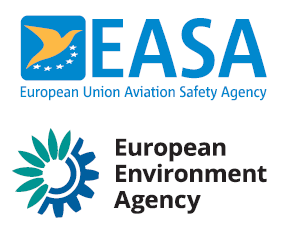 This section identifies further recommendations from EASA and EEA building on the information and analysis within EAER 2025. They aim to improve the level of environmental protection in the area of civil aviation, without compromising safety, and assist the European Union in ensuring that the aviation sector contributes to the objectives of the European Green Deal14 through effective collaboration, commitment and verification.
This section identifies further recommendations from EASA and EEA building on the information and analysis within EAER 2025. They aim to improve the level of environmental protection in the area of civil aviation, without compromising safety, and assist the European Union in ensuring that the aviation sector contributes to the objectives of the European Green Deal14 through effective collaboration, commitment and verification.
